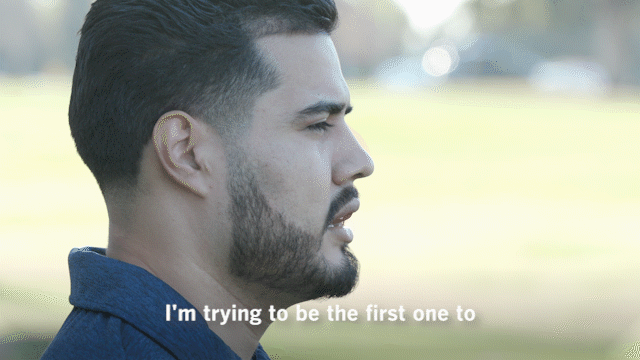
A new report examining Latino wealth in six U.S. states shows that New York â where Puerto Ricans and Dominicans make up the largest Latino ethnic groups â has the highest wealth disparities between Latino and white households.
The Brookings Metro report shows that white households in New York hold 40 times the wealth of Latino households. Thatâs a stark contrast to Illinois â home to the smallest Latino-white wealth gap â where white households hold 1.9 times the wealth of Latino households.
âThe regional differences between Latino wealth, assets, and debt highlight how Latinos are not monolithic,â write the reportâs authors Tonantzin Carmona, a Brookings Metro fellow, and Noreen M. Surge, of the Latino Policy Forum.
âPublic narratives about Latinosâ economic condition place far too much emphasis on individual behaviors of the group, rather than structural factors such as discrimination.â
The report highlights Latino wealth, assets and debt across Illinois, California, Texas, Florida and New York â geographic areas where Latinos have traditionally lived for generations and continue to see their population increase, according to Brookings. The sixth state, North Carolina, was chosen to spotlight an area with a fast-growing Latino population.
Data from this report come from the 2021 Survey of Income and Program Participation. It was released Tuesday with an online convening that included U.S. Sen. Alex Padilla (D-Calif.), who stressed the importance of empowering Latino households with savings, retirement and investment accounts.
Wealth is what you own minus what you owe, and as Brookings notes, itâs measured by considering the difference between assets and liabilities. Assets include vehicles, checking accounts and homes. Liabilities include mortgages, student loan debt and car loans.
In New York, a smaller percentage of Latinos hold equity in their own home, retirement accounts and assets at financial institutions than Latinos in the other five states.
Hereâs your guide for events in L.A. and O.C. counties that are bringing the community together to celebrate DĂa de Muertos.
âPart of why Latinos in New York hold less wealth than Latinos in other states may be due to the lack of homeownership opportunities, particularly in New York City, where most Latinos live,â according to the report.
Carmona told De Los itâs important to consider the sizable Afro-Latino population in New York, as well as the structural barriers they face.
She highlighted findings from the UCLA Latino Policy and Politics Institute showing that âAfro-Latinos experience anti-Blackness in the economy and society despite their higher educational attainment rates and labor market participation.â
This affects household incomes and homeownership, the report notes.
Other key findings:
- Aside from New York, the Latino-white wealth gap is more pronounced in California, with white households holding about nine times the median wealth of a typical Latino family. In Texas, white households have three times the wealth of Latino households; in North Carolina, 3.6 times; in Florida, five times.
- Significant differences in asset ownership drive some of the wealth disparities between Latino and white households in California, where a smaller share of Latino households hold retirement accounts, assets at financial institutions and equity in their homes. For example, 41% of the stateâs Latino households hold retirement accounts, compared with 68.3% of white households.
- Latinosâ median household net worth in Illinois is $158,800, significantly higher than in the other five states. Latinos have median net worth of $74,600 in Texas; $55,800 in North Carolina; $54,200 in Florida; $52,600 in California; and $5,900 in New York.
As the report notes, âLatinosâ ability to build wealth in Illinois may be attributed to homeownership opportunities and settlement patterns in the state, particularly in the suburbs.â
Research by the Latino Policy Forum shows that more than 50% of Illinoisâ Latino population lives in the suburbs. And, 47% of Latino households in the suburbs earn more than $75,000, and 60% of Latinos living in suburbs own their homes.
Carmona said this kind of data breakdown can help spark a dialogue about âwhat we might learn from one place to another.â
Many immigrants lack generational wealth that can be passed on to their children. A group of Latinx investors is trying to change that.
âThere could be policies around helping to increase homeownership rates in certain states, ensuring that itâs done in an affordable way so that Latinos arenât accumulating all this debt,â she said.
The report featured insight from Latinos of lower-wealth backgrounds who took part in community conversations this year between April and August. A total of 107 participated in Spanish and English in Illinois, California, Florida and North Carolina.
Many Latinos aspired to build wealth âbut were not yet ready to focus on these goals because they were mostly concerned with necessities such as rent, food, and utilities,â the report found.
Participants noted âreverse transfers of wealth and resources between children and parents, in which children supported parents for both daily expenses and retirement.â
The most common types of reported debt included credit card debt, car debt and medical debt.
More to Read
The Latinx experience chronicled
Get the Latinx Files newsletter for stories that capture the multitudes within our communities.
You may occasionally receive promotional content from the Los Angeles Times.










